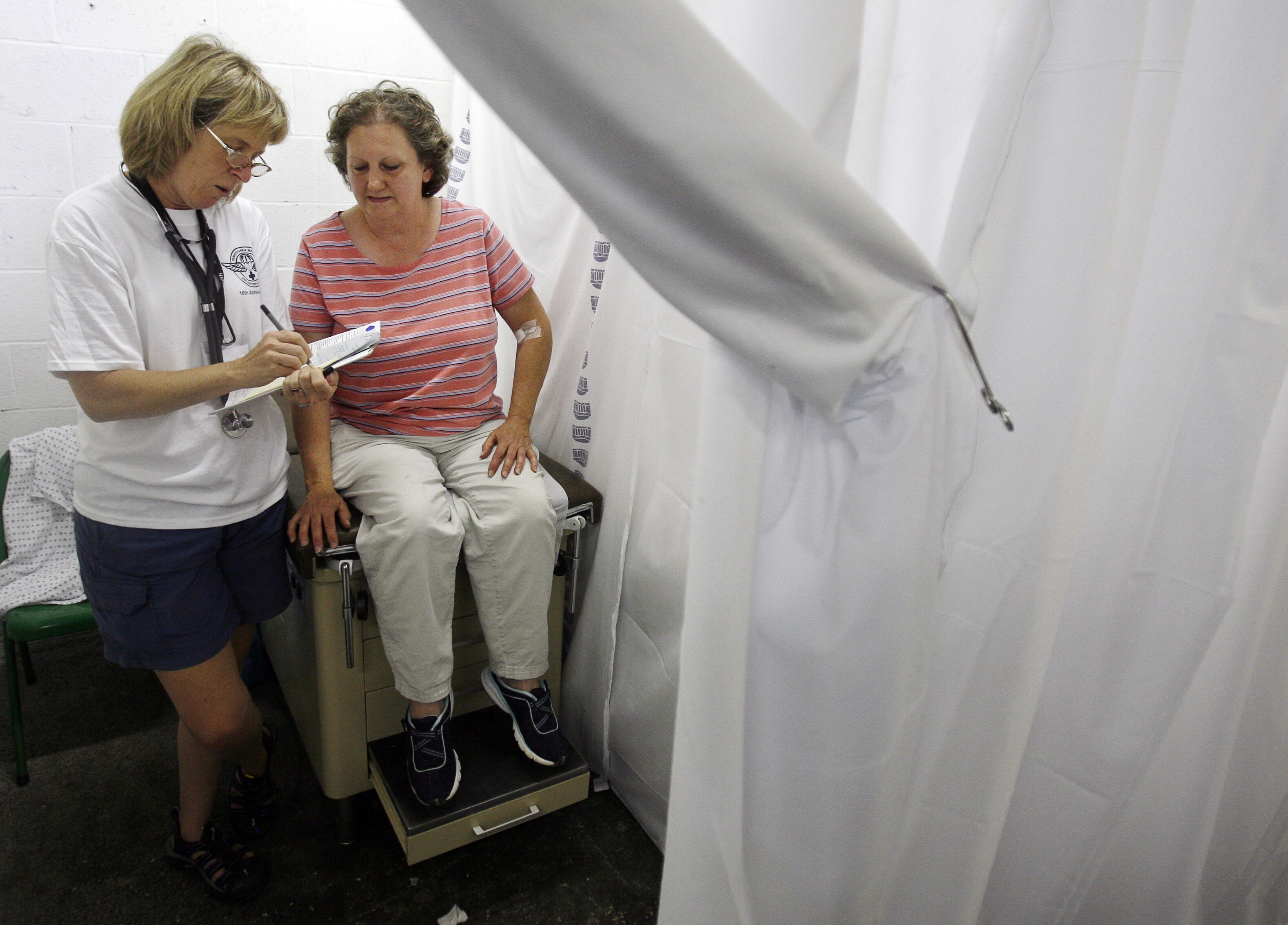Three paths to restart

In the race to fight COVID-19 and restart the economy, three broad strategies have emerged.
Image: REUTERS
Marin Gjaja
Managing Director and Senior Partner, BCG Global COVID-19 Response Leader, Boston Consulting GroupRich Hutchinson
Managing Director and Senior Partner, Social Impact Practice Leader, Boston Consulting GroupAdam Farber
Managing Director and Senior Partner, Health Care Practice Leader, Boston Consulting GroupStay up to date:
The Great Reset
- Three broad strategies for fighting the coronavirus and restarting the economy have emerged, but it's clear we need a coordinated global effort that includes sharing of data and best practices.
- A small subset of governments, like South Korea and New Zealand, moved quickly to crush and contain the spread of COVID-19.
- Most countries were unable to contain the initial outbreak and moved to flatten and fight.
- It's too early to draw conclusions about Sweden's sustain and support model.
The world is in transition. The COVID-19 pandemic is straining healthcare systems, government fiscal capacity and the ability of many organizations to cope with the changes wrought by the virus and the response to it.
The level of uncertainty for most leaders is unprecedented – and most frameworks for planning and problem solving are unable to manage the geographic variability, uncertainty and exponential change brought by the crisis.

Many countries have flattened – and, in rare cases, nearly eliminated – the curve of coronavirus infections and started the precarious work of resuming economic activity.
So far, three broad strategies for fighting the coronavirus and restarting the economy have emerged, with different approaches to managing the tradeoffs between health outcomes and economic and societal costs. They are:
1. crush and contain
2. flatten and fight
3. sustain and support

Crush and Contain
A small subset of governments moved quickly to contain the spread of the coronavirus. In some cases, they have nearly eliminated local transmission. South Korea rapidly imposed restrictions, deployed comprehensive virus-monitoring systems and quarantined hot spots to avoid a complete shutdown. New Zealand locked down the country early in combination with rapidly expanding virus monitoring to limit community spread.
The crush-and-contain strategy may still be an option for a small number of countries. Costa Rica, for example, declared a state of emergency in late March, and has had fewer than 20 new cases per day since early April.
Other countries that were unable to fully contain the spread early have since started to migrate to a crush-and-contain strategy. Israel, for example, was averaging hundreds of new cases per day in mid-April. After considerably scaling the capacity of its virus-monitoring system, the country’s share of positive tests fell below 1% by 18 May, while its seven-day average of new cases fell to 20 (fewer than 2.5 new cases per 1 million people).
These crush-and-contain governments are now focused on implementing strict border controls and testing at major points of entry to keep new cases to an absolute minimum. In effect, each government’s goal is to restore its economy within a walled society.
But a crush-and-contain strategy still poses ongoing challenges and tradeoffs related to international trade, travel and tourism – important economic engines for many of these governments. Moreover, public authorities must remain vigilant against new waves of infection. In early May, South Korea closed bars and nightclubs in Seoul after the discovery of 40 new cases linked to one patron. And in mid-May, China imposed a citywide lockdown in Shulan – which is near the Russian border and home to about 700,000 people – after an outbreak.
Flatten and Fight
Most countries—including most in Europe, South America and North America—were unable to contain the initial outbreak. As a result, they pursued a broad strategy of flatten and fight. Faced with exponential growth of cases, they instituted society-wide social distancing and lockdowns to avoid a public health crisis.
Flatten and fight is, necessarily, a long and uncertain approach. The goal is to reopen the economy in phases without overwhelming the healthcare system. But, because the virus has not yet been crushed, governments face a meaningful risk of future outbreaks and the need to institute localized lockdowns. In effect, these countries hope to balance health and economics and build virus-monitoring capacity while holding out for successful treatments and vaccines. So far, only a few countries, such as Germany, have been successfully created the required infrastructure. And many developing markets lack the health care or virus-monitoring infrastructure and income or food security required to outlast the coronavirus.
Flatten and fight strategies are also inherently expensive. Health outcomes are an ongoing concern, and unemployment and economic activity take huge hits. Countries that pursue the flatten-and-fight strategy must develop de-averaged policies for specific regions, states and even municipalities to minimize health and economic tradeoffs – a differentiated strategy that will test the resolve and the resources of both governments and society.
What is the World Economic Forum doing to manage emerging risks from COVID-19?
Sustain and Support
The experience of Sweden suggests an alternative model: sustain and support. The Swedish approach is built on selective and largely voluntary restrictions to protect vulnerable population segments, such as the elderly, while keeping much of society and the economy open. The goal is not so much to limit community spread as to manage it in order to build herd immunity among the young and healthy.
It is too early to draw definitive conclusions about this model. As of early May, Sweden had three to seven times the number of deaths per capita as its Nordic peers – although that disparity may even out over time. Sweden has also struggled to contain the coronavirus in nursing homes. The percentage of COVID-19 cases in Sweden in people age 70 or older is double that of Denmark and triple that of Finland and Norway.
The economic benefits of this approach remain uncertain. Mobility data suggests Sweden’s residents are commuting, shopping and taking public transit about 15% less, on average – about the same level as in Norway, but significantly less than in Denmark and Finland.
Despite the death toll, the coronavirus has not overwhelmed the Swedish healthcare system. And survey data suggests that most Swedes support the approach, which may make it more sustainable over time.
The Path Forward
Could the Swedish model work elsewhere, and, if so, how might it be improved? National strategies cannot be the only answer, especially in large countries, such as India, Russia and the US. There are still opportunities at the state or regional level to impose a crush-and-contain strategy.
Given the instability of flatten and fight, the next few weeks and months are critical for countries and regions facing a restless public, the possibility of successive waves of infection and stagnant economies. Finding better strategies and policies remain urgent.
We need to invent the new field of epinomics – the integrated analysis of health outcomes and economic and societal costs – in real time. And we need to create a global learning system based on shared data standards and rapid information sharing to identify what works, share best practices, and develop a coordinated global effort to defeat the coronavirus and restart the world economy.
Don't miss any update on this topic
Create a free account and access your personalized content collection with our latest publications and analyses.
License and Republishing
World Economic Forum articles may be republished in accordance with the Creative Commons Attribution-NonCommercial-NoDerivatives 4.0 International Public License, and in accordance with our Terms of Use.
The views expressed in this article are those of the author alone and not the World Economic Forum.
Forum Stories newsletter
Bringing you weekly curated insights and analysis on the global issues that matter.
More on Health and Healthcare SystemsSee all
Nina Rawal and Dorothy Chou
September 18, 2025
Eric White and Elia Tziambazis
September 18, 2025
Jan-Willem Scheijgrond and Syaru Shirley Lin
September 18, 2025
Ashwini Sharan and Abhishek Jain
September 15, 2025
Shyam Bishen
September 15, 2025








